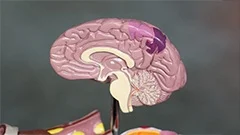Introduction
In this comprehensive academic course on osteology, we delve into an in-depth exploration of the metacarpus and the phalanges – integral components of the human hand. The study of these structures is crucial for understanding the skeletal system's complexity and functioning. This course will provide a detailed overview of their anatomy, function, development, variation, clinical relevance, and evolutionary significance.
Chapter 1: Overview
This chapter offers a brief introduction to the hand's anatomical regions, focusing on the metacarpus and the phalanges. We will discuss the number of these bones in each region, their names, and their general characteristics.
Section 1.1: The Hand
The human hand consists of two parts: the carpus (wrist) and the metacarpus and phalanges (fingers). In this course, we will primarily focus on the latter two regions.
Section 1.2: The Metacarpus
The metacarpus is a region of five long bones that connect the carpus to the phalanges in each finger. Each bone is named metacarpal I (thumb) to metacarpal V (little finger), with their corresponding number representing the digit they articulate with. The shape, size, and functions of these bones differ depending on the specific role they play in various hand movements.
Section 1.3: The Phalanges
The phalanges are the bones that make up each finger, with three phalanges in each digit (excluding the thumb, which has only two). These bones are named proximal, middle, and distal phalanx, based on their position from the metacarpus to the tip of the finger. Each phalanx has a unique role in enabling complex hand movements like grasping, manipulating objects, and fine motor skills.
Chapter 2: Anatomy and Morphology
This chapter will delve deeper into the specific anatomical features and morphological characteristics of each bone in the metacarpus and phalanges, including their shape, articular surfaces, and growth patterns.
Section 2.1: Metacarpals
Each metacarpal is a long bone that can be divided into three parts – the base, shaft, and head. The base articulates with the carpal bones in the wrist, while the shaft connects to the proximal phalanx. The head is the distal end of the metacarpal, which articulates with the proximal phalanx.
Section 2.2: Phalanges
Each phalanx can be divided into three regions – the proximal, middle, and distal region. The proximal phalanx articulates with the metacarpal, while the middle and distal phalanges articulate with each other.
Section 2.3: Joints
Each bone in the metacarpus and phalanges is connected to adjacent bones through synovial joints, which allow for a range of motion. The specific type of joint and its mobility vary between the different bones in these regions.
Chapter 3: Function and Movement
This chapter will examine the role each bone plays in hand function and how their unique shape and morphology enable various movements like grasping, manipulating objects, and fine motor skills.
Section 3.1: Metacarpal Function
The metacarpals play a crucial role in providing stability to the hand during gripping and manipulation of objects. They also function as levers for generating force and power when the hand is in motion.
Section 3.2: Phalangeal Function
The phalanges enable fine motor skills by allowing for precise movements at each joint. The distal interphalangeal joint, in particular, is responsible for the bending and straightening of the fingertip when picking up small objects or performing intricate tasks.
Chapter 4: Development, Variation, and Clinical Relevance
This chapter will explore how these bones develop during embryonic growth, the variations that may occur in their morphology, and their clinical relevance in various conditions and disorders.
Section 4.1: Embryonic Development
The metacarpals and phalanges develop from the mesoderm, specifically from the intermediate and lateral plate mesoderm. They undergo a process of ossification that begins during fetal development and continues postnatally.
Section 4.2: Variation and Adaptations
Variations in bone structure can occur due to genetic factors, environmental influences, or adaptations to specific tasks. For example, individuals who rely heavily on their hands for manual labor may develop thicker bones in the metacarpus and phalanges.
Section 4.3: Clinical Relevance
Understanding the anatomy and function of the metacarpus and phalanges is essential for diagnosing and treating various clinical conditions, such as fractures, dislocations, arthritis, and nerve damage in these regions.
Chapter 5: Evolutionary Significance
This chapter will examine how the structure and function of the metacarpus and phalanges have evolved over time and their significance in our understanding of human evolution.
Section 5.1: Fossil Record
By analyzing fossils, we can trace the evolution of these bones and determine how they may have changed to adapt to various environments and lifestyles throughout history.
Section 5.2: Adaptations and Innovations
The unique structure and function of the metacarpus and phalanges played a significant role in the development of tool use, bipedalism, and fine motor skills during human evolution. Understanding these adaptations can provide valuable insights into our species' past and future.
Conclusion
In conclusion, the study of the metacarpus and phalanges offers a fascinating look into the complexity and intricacy of the human skeletal system. By understanding their anatomy, function, development, variation, clinical relevance, and evolutionary significance, we can better appreciate the role they play in our everyday lives and the broader context of human biology.
MCQ: Test your knowledge!
Do you think you know everything about this course? Don't fall into the traps, train with MCQs! eBiologie has hundreds of questions to help you master this subject.
These courses might interest you
Create a free account to receive courses, MCQs, and advice to succeed in your studies!
eBiologie offers several eBooks containing MCQ series (5 booklets available free for each subscriber).




